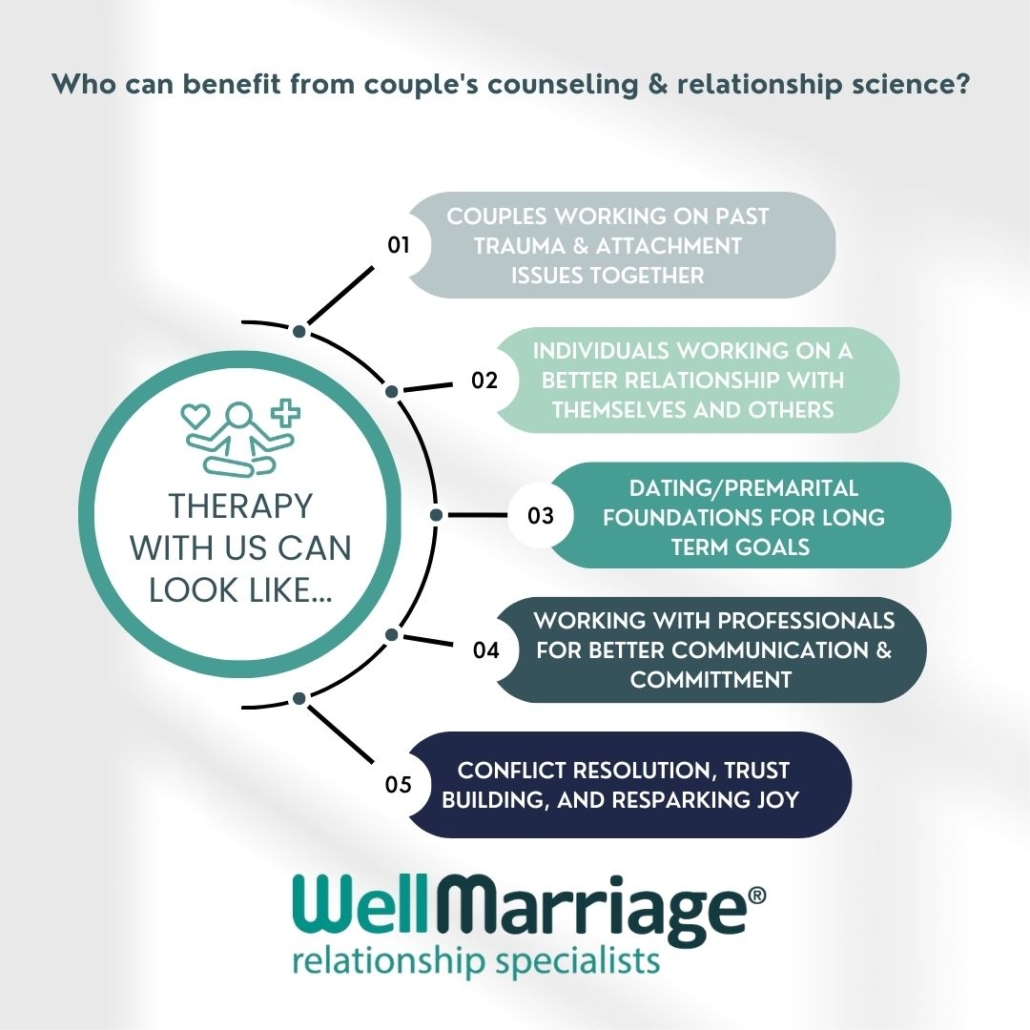Rumored Buzz on Aim Point Counseling
Table of ContentsThe 25-Second Trick For Aim Point CounselingOur Aim Point Counseling IdeasAim Point Counseling Things To Know Before You Get ThisSome Known Facts About Aim Point Counseling.Little Known Facts About Aim Point Counseling.7 Simple Techniques For Aim Point Counseling
The longitudinal style includes a pre-treatment study and two follow-up studies at 3- and 12-months post-intervention. The research is established in 8 Relationships Australia Victoria centres, throughout cosmopolitan, external suburban areas, and regional/rural sites. Relationships Australia, a non-government organisation, is the largest supplier of pair therapy and relationship services in Australia.
These high prices of connection breakdown have been consistently associated with adverse health effects for both adults and youngsters following divorce/separation.
The Best Guide To Aim Point Counseling
Longitudinal studies additionally suggest that children of divorce have a higher incidence of psychological problems, alcohol and drug use, and risky sex-related behaviour [7] Although the results of divorce and splitting up can be harmful, study shows that high relationship disharmony in intact couples is likewise likely to have unfavorable end results.
Factors that affect the outcomes of these services need complete examination. Research to date has determined both pair and specific variables that might contribute to relationship dissonance. These consist of connection contentment and dedication at the couple degree, and clinical depression at the individual level. Robust research to review relationship-enhancing interventions in the area are scarce.
10 Simple Techniques For Aim Point Counseling
Connection complete satisfaction has actually been one of the most typical end result variable determined in even more than 200 analyses of pair therapy [11,12] Researches have found substantial enhancements in connection fulfillment from pre- to post-treatment [13,14] and throughout one to two years following coaching [15] In these studies, relationship satisfaction was most regularly evaluated utilizing the Dyadic Adjustment Scale (DAS) [16] While a lot of research studies suggest renovations in relationship complete satisfaction complying with pair counselling, they are restricted by the examples and steps made use of, mainly temporary follow-up time frameworks, and evaluations that do not account for the dyadic nature of couple data., is another typically examined relationship outcome.
To sum up, study shows that couple-specific variables along with specific factors may anticipate the results of couple therapy and relationship solutions. The causal instructions of these relationships, however, is much less clear. These monitorings are important, given that, to warrant and guide the application of partnership solutions such as couple counselling, empirical evidence needs to check out both the results of relationship services and the aspects that forecast effective therapy.
There is an expanding consensus that efficacy researches must be complemented by performance research study to best inform clinical practice [ 29] The restricted performance research study that exists to day suggests that pair therapy can enhance results such as connection satisfaction [33,43], interaction skills and general well-being [44], at the very least in some European countries.
We presently understand little about the profiles of pairs that look for connection education contrasted with those who seek partnership counselling, or the results of these programs. Unscientific proof suggests that there might be significant distress amongst at the very least some couples seeking connection education and learning. Partnership education programs differ from couple therapy as they are normally extremely structured, performed in groups, and concentrate on a combination of 4 elements; awareness, feedback, cognitive adjustment, and abilities training [45]
Excitement About Aim Point Counseling
Comments involves individuals completing sets of questions regarding their connection (e.g. measures of interpersonal troubles), and getting info on what their ratings show. Cognitive-behavioural approaches advertise changing cognitions to facilitate positive partnerships. These may include advertising practical attributions/expectations around negative partner behavior [46] In skills training, pairs go to talks or discussions on partnership skills, and practice these throughout facilitator-led tasks [ 45]
These results have actually lingered for as much as 4 years in some research studies [47] These meta-analyses highlight limitations in the present literature on connection education and learning. Particularly, the bulk of researches entailed couples from upper socio-economic backgrounds that were not experiencing high relationship dissonance [47,48] This example account may not represent clients who typically provide for connection education and learning.
The Ultimate Guide To Aim Point Counseling

Extremely little research has actually taken a look at the website here comparative advantages of pair coaching and partnership education programs. As customers are most likely to self-select into these solution types, it is not clear whether characteristic partnership distress profiles existing per solution kind, or certainly whether there is a communication between presenting account, service kind and end result.
(https://sketchfab.com/a1mpoint)
Thus, we have actually included a 12-month follow-up to gauge longer-term fads and impacts. The research study uses a variety of standardized outcome actions given that some previous investigations have actually been criticised for their absence of standardised evaluation [50] The use of statistical evaluations that think independence of information, such as t-tests, or ANOVAs, has been widespread in previous researches [ 44,49]
For that reason, we propose to utilise multi-level statistical modelling procedures that control for the inter-dependence of couple information to analyze any type of treatment effects. The specific goals of the ECC research are to: 1. Map accounts of clients seeking neighborhood agency-based pair counselling vs. connection improvement programs in regards to socio-demographic and relationship indications (such as partnership fulfillment, partnership commitment, interpersonal troubles, and factors for attending), along with wellness (such as depression, general well-being) and health service usage (eg.
2. Establish whether couple therapy and relationship education and learning solutions enhance three- and twelve-month end results for relationship fulfillment, commitment, and clinical depression, utilizing statistical evaluations appropriate to couple data. 3. Identify the family member contributions of client elements (individual and couple) and therapy/education elements to results at 3- and 12-months, and to sustainability of outcomes over time.
Not known Incorrect Statements About Aim Point Counseling
Multi-level modelling to identify pre-post differences, controlling for dyadic (pair) degree. To add to the literary works assessing the efficiency of community-based pair therapy.